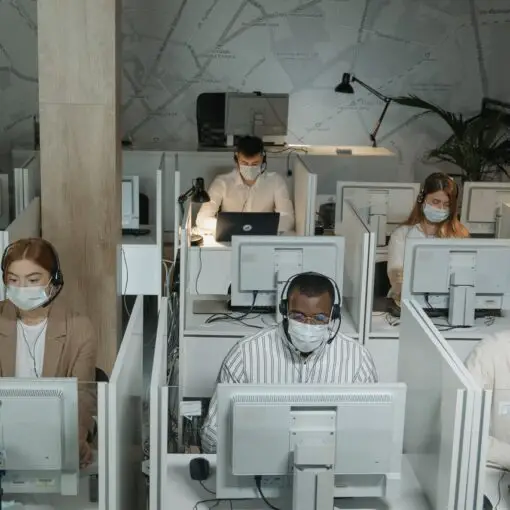We are constantly inundated with new information all of the time, even if it’s just sensory input from what we smell, hear, or taste. Most of the time, you don’t have to break down the smell of frying bacon to an algebra equation and critically think your way through it, but it is necessary to be prepared.
Critically thinking about new information involves a few techniques, including analysis, communication, creative thinking, problem-solving, and maintaining an open mind. Any time you are confronted with a new problem, these should be your primary tools.
Embracing the above won’t always be easy, especially considering the fact that some of us are divergent thinkers and some of us are convergent thinkers. Convergent thinkers often avoid brainstorming, while divergent thinkers are often lacking in the communication department.
What is Critical Thinking?
Critical thinking is entirely self-induced. It doesn’t come from an outside source and it isn’t something that everyone is automatically very good at. Critical thinking is like a muscle. In order to grow it, you have to work it and feed it and you have to do so often rather than rarely.
There are numerous instances, probably every day throughout your life where you have the opportunity to apply critical thinking skills to one degree or another. It involves a thorough shakedown of a potential problem.
When we receive new information, we are likely to take it at face value without exploring the concept of this new information. Critical thinking involves stripping the information down to its core—then understanding each part as you evaluate them, one by one.
- Arriving at your own conclusion following a thorough analysis
- Creating a table of pros and cons
- Using creative approaches
- Valuing and using different perspectives
- Using all of your mental effort to eradicate bias and the potential for bias in your analysis
Approaching a Problem from a Creative Standpoint
This is a little more on the difficult side for convergent thinkers but, in order to critically think your way through a problem, you have to get uncomfortable sometimes. Brainstorm the problem by gathering all of the data and analyzing each point.
Creative thinking means that you will probably arrive at multiple potential solutions. You may have to get unconventional or, at least, approach the problem in an unconventional way. If you are a convergent thinker most of the time, this approach will seem entirely alien to you.
If you have someone with you, it’s always a good idea to go through the brainstorming part with them, as two minds are better than one.
Analyzing the Problem
This is a part of the above creative thinking process. Gathering data points isn’t just a gathering process, but it’s also an act of analysis, sifting through the minutiae of gathered information while you work your way through the problem.
- Ask yourself, “why do you need the information?”
- Gather the information from every available source
- Ask yourself the questions that need to be answered and then do it again in different ways
- Break all of your gathered data down
- Create a mind map
Receiving new information isn’t always what you think. It’s information, sure, but is it accurate information? Is it unbiased information? What is the source? Are there other sources that can bolster the original? Have you lived experiences that refute the information you’re being given?
Blindly accepting new information without ever considering anything beyond receiving the information is as far from analysis as you can get. Part of the analysis phase of critically thinking your way through new information is gathering data and that includes sources, relevancy, comparisons, reality, and more.
Look for holes in the information as presented and conceive of potential arguments that could potentially contend with this new information.
Maintain an Open Mind
Many people go through life assuming they have an open mind while failing many of the critical thinking steps that would indicate an open mind. Whether that is from some sort of bias, formed throughout the years or having a tendency to trust the “experts.”
If you catch yourself going over the information and picking out things that you already agree with, then you are not giving the problem your full, open-minded attention. This includes the common mistake of confusing cause and effects because you have seen something similar before.
This is the part where you need to identify all of your assumptions. They’ll be easy to come across because they are often unassociated with what you just read or observed. Instead, they are things that you came up with as a result of your observation.
View the Information from Different Perspectives
You’re not the only one that has a thinking and analyzing brain. There are others around you as well who may have their own, unique perspective on the information that’s been presented to you.
Of course, the one thing that you have to be cautious of is other people’s bias. As you have a tendency to have your own bias, so do they. It’s important to perceive a problem from other perspectives without taking on the bias of those other perspectives.
The reality is, whatever you believe about the problem, there is likely someone out there that holds the exact opposite belief and you should try to approach the problem from that point of view as well, remaining indifferent to emotional or potentially biased feelings on the matter.
It may seem counterintuitive to take the opposing viewpoint but it’s imperative that you break a problem down from all perspectives, only eliminating the things that are clearly not a solution to the problem.
A counter position may very well highlight the positives of your own argument or help you to identify the weaknesses in your own argument so that you can clear them up.
All Things Considered
Critical thinking is not something that comes naturally to everyone. However, it is something that each and every one of us can improve, to one degree or another, when we are faced with new information. Fortunately, we all have plenty of opportunities, as we are confronted with new information every day.
References
Ho, L. (N/A). How to Think Critically: 5 Powerful Techniques
Retrieved from: https://www.lifehack.org/855960/how-to-think-critically
Critical Thinking & Problem-Solving
Retrieved from: https://courses.lumenlearning.com/suny-esc-educationalplanning/chapter/critical-thinking-2/





